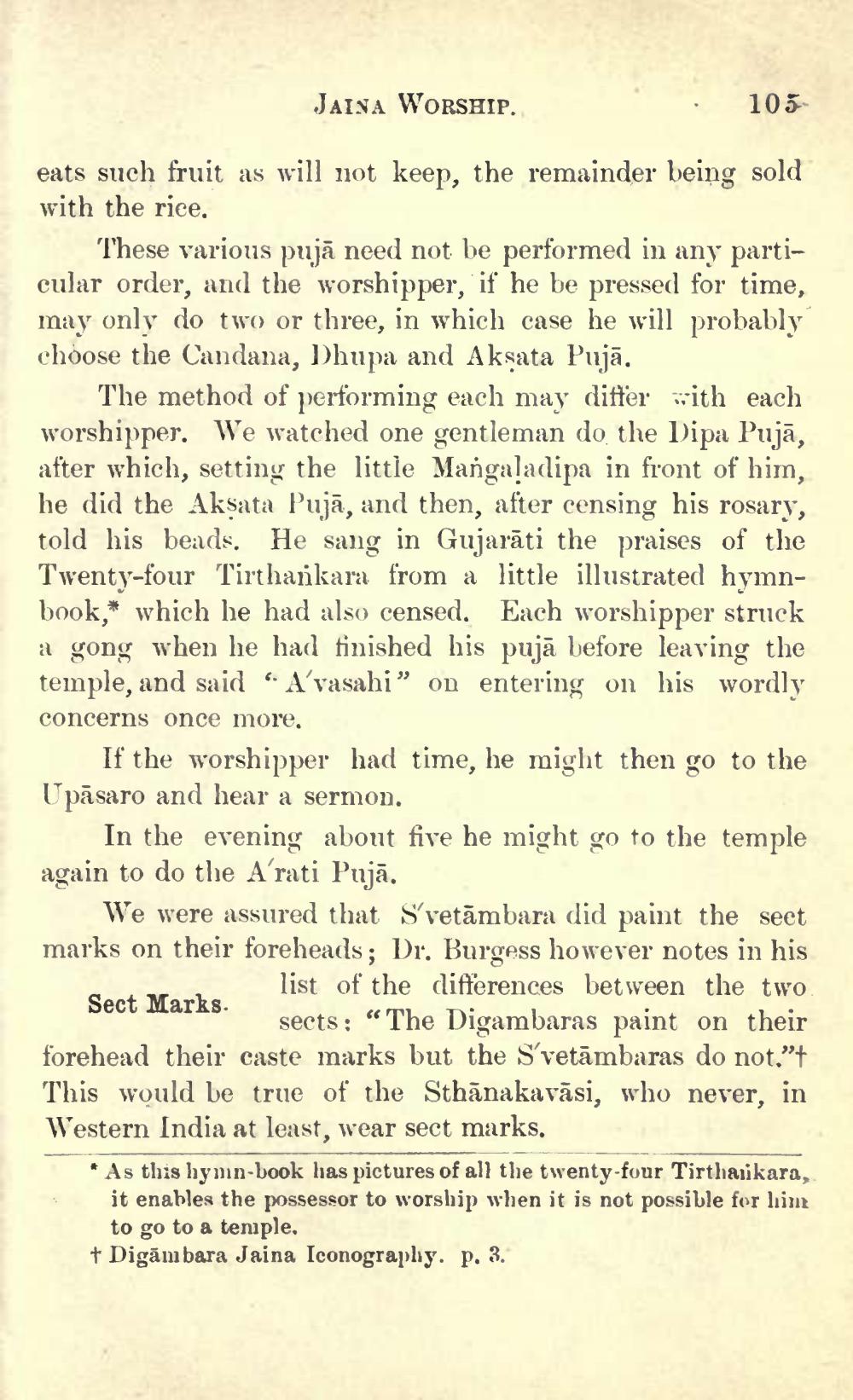________________
JAINA WORSHIP.
105
eats such fruit as will not keep, the remainder being sold with the rice.
These various pujā need not be performed in any particular order, and the worshipper, if he be pressed for time, may only do two or three, in which case he will probably choose the Candana, Dhupa and Aksata Pujā.
The method of performing each may differ with each worshipper. We watched one gentleman do the Dipa Pujā, after which, setting the little Mangaladipa in front of him, he did the Aksata Pujā, and then, after censing his rosary, told his beads. He sang in Gujarāti the praises of the Twenty-four Tirthankara from a little illustrated hymnbook,* which he had also censed. Each worshipper struck a gong when he had finished his pujā before leaving the temple, and said " A'vasahi” on entering on his wordly concerns once more,
If the worshipper had time, he might then go to the Upāsaro and hear a sermon.
In the evening about five he might go to the temple again to do the A'rati Pujā.
We were assured that Svetāmbara did paint the seet marks on their foreheads; Dr. Burgess however notes in his
list of the differences between the two Sect Marks.
sects: “The Digambaras paint on their forehead their caste marks but the S'vetāmbaras do not.”+ This would be true of the Sthānakavāsi, who never, in Western India at least, wear sect marks.
* As this hymn-book has pictures of all the twenty-four Tirthalikara,
it enables the possessor to worship when it is not possible for lim to go to a teniple, + Digām bara Jaina Iconography. p. 3.




